For this fall’s Pacific Bonsai Expo, we have some judging categories for narrow groups of trees (Best Large Conifer is an example) and other categories (like Best Medium Bonsai Display) that include a broad diversity of species.
For these latter categories, it can be difficult to compare species as different as pine and beech.
One reason it can be hard to compare different species is that they show age differently. Conifers are known for displaying age in their bark and their deadwood. Deciduous bonsai can have great bark and deadwood, but they’re more likely to show their age, or at least their time in training, through branch density.
If raw age were the most important characteristic, conifers would often win as they typically live longer than deciduous trees in nature and in bonsai cultivation.
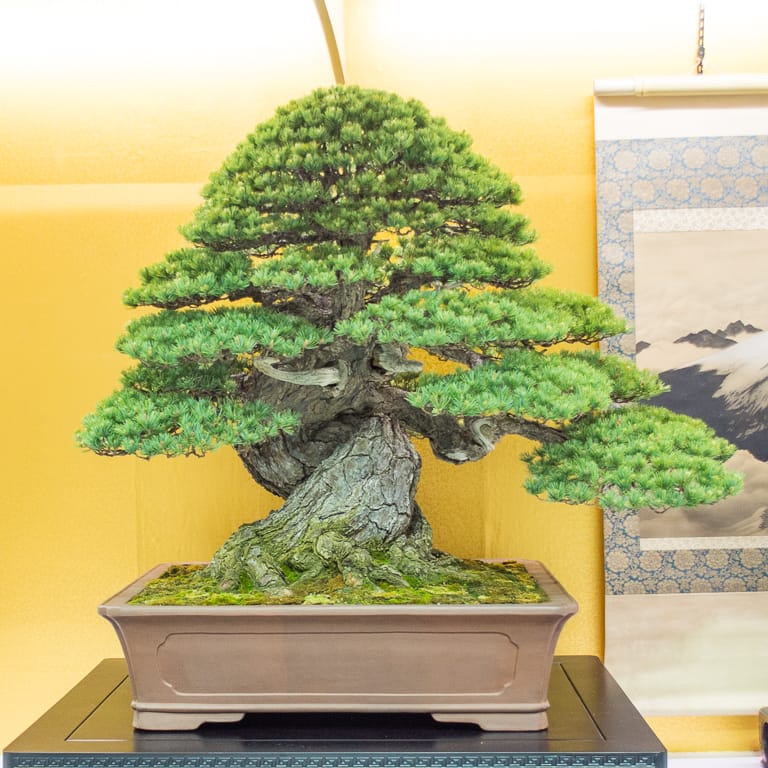
White pine estimated to be over 500 years old

A much younger Japanese beech
When evaluating trees for an exhibition, I consider how well a tree conveys age based on species-specific characteristics. For pines, I look at the bark. For beech, I look at the branch refinement and density. For junipers, I look at the age of the deadwood.
What about when deciduous trees have interesting deadwood – does this make it OK to compare different species directly? Not for me. Instead of comparing juniper deadwood against ume deadwood, I’ll score junipers against junipers and ume against ume.

Interesting deadwood on a shipmaku juniper
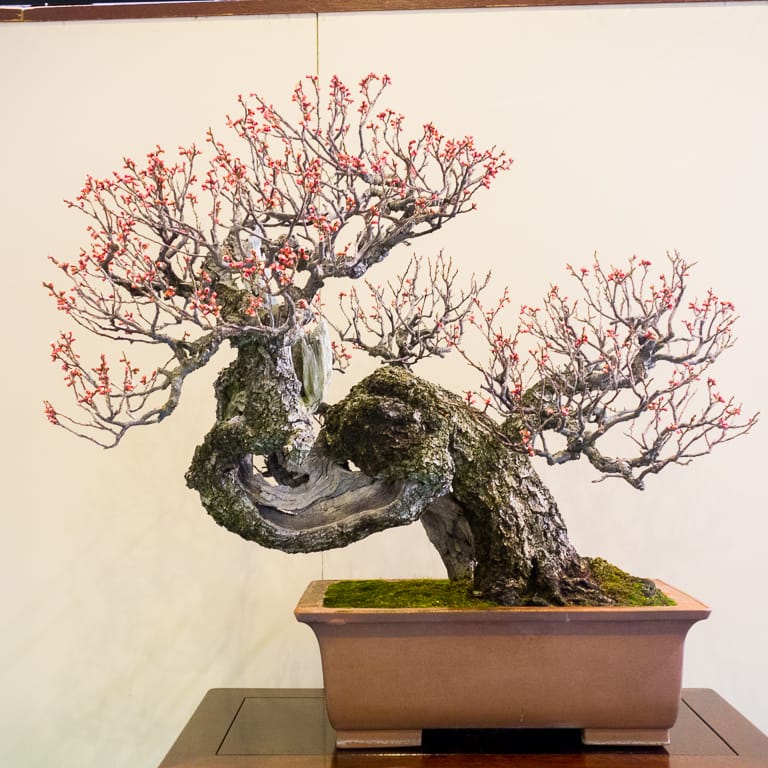
Deadwood and craggy bark on an ume
I take a similar approach when evaluating branch density. For example, needle junipers can convey time in training well through their branch density. Trident maples are also known for achieving great branch density, but the nature of the branch structures of these two species is different enough that I don’t compare them directly.
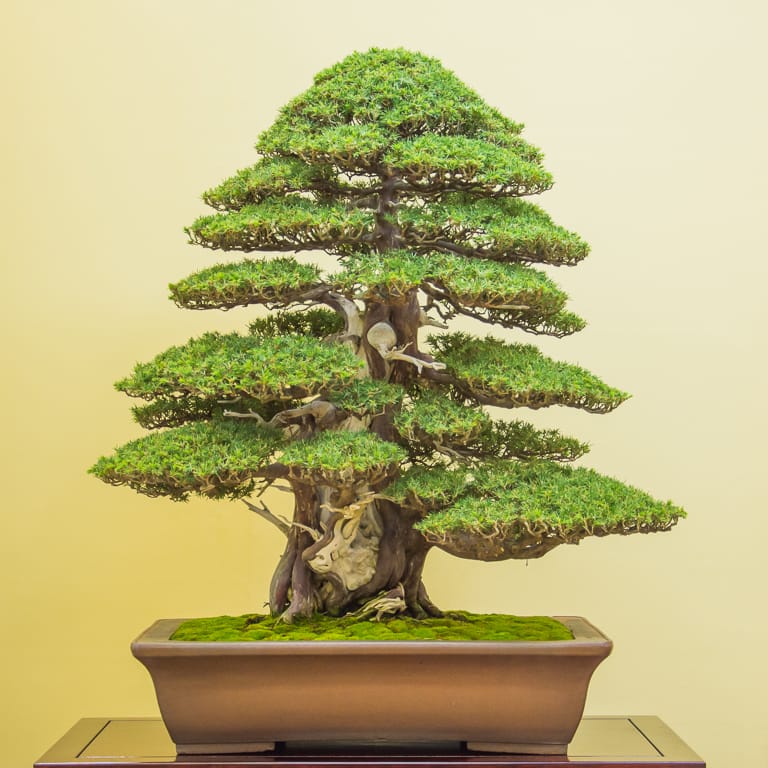
Needle juniper
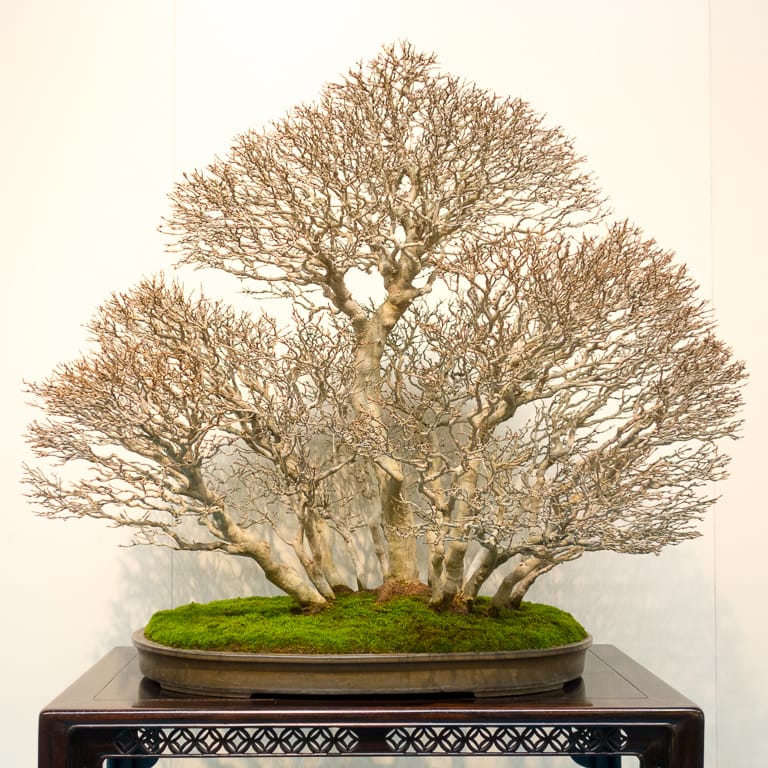
The same goes for comparisons among similar groups of trees. Like trident maples, zelkova are known for their ability to produce dense branching, but I wouldn’t expect to see trident maples with branching as dense as what can be achieved with zelkova bonsai.
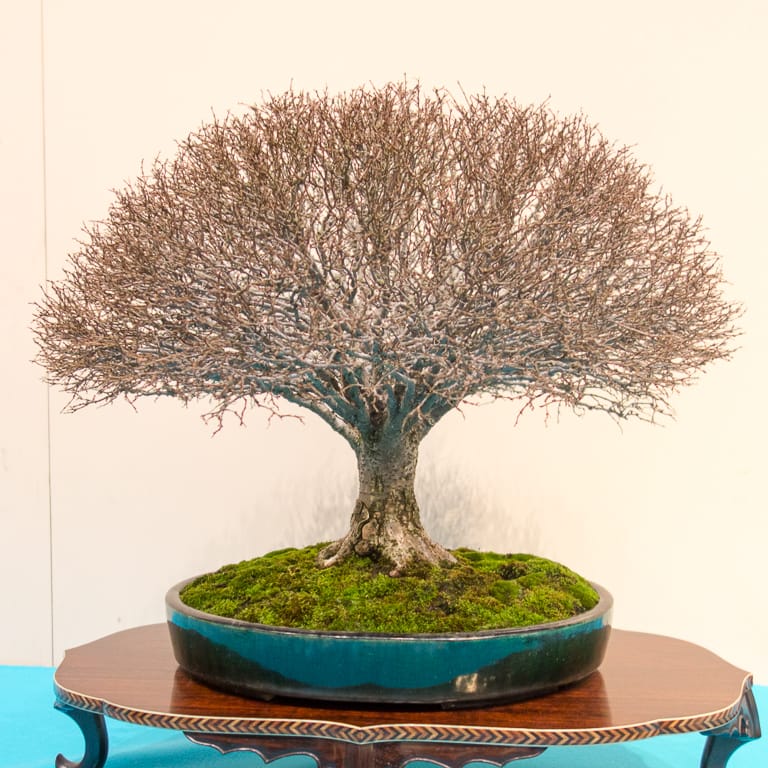
Zelkova
The last example brings up a related point that even though branch density is great, we still get to decide whether or not it’s aesthetically pleasing.
Our aim in offering multiple awards is to incentivize submissions in different categories as this can make for a more diverse exhibition.
How this plays out depends on you as your submissions will set the tone for the event. The submission period is opening soon (next month) – I’m looking forward to seeing your submissions!
Reminder – the BABA exhibit is on this weekend
The Bay Area Bonsai Associates will hold their 40th annual exhibit at the Lakeside Park Garden Center in Oakland, California, this weekend, January 15-16. The event runs from 5pm – 9pm Saturday and 10am – 4pm Sunday. Club sales by the East Bay Bonsai Society and Marin Bonsai Club both days. Admission is free.
✕
Subscribe to Indian Bonsai Art
New Posts Delivered Every Tuesday and Friday
